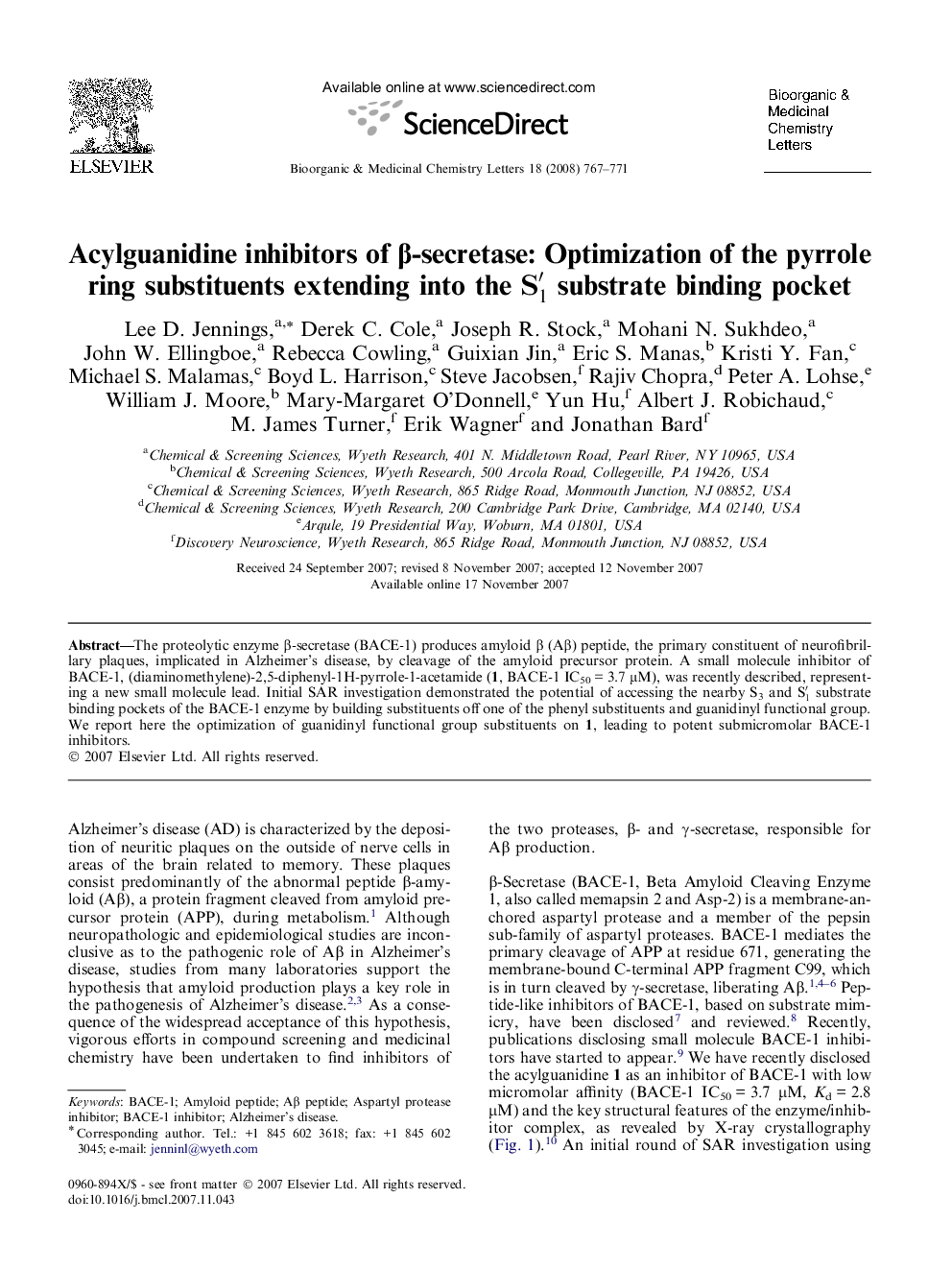| Article ID | Journal | Published Year | Pages | File Type |
|---|---|---|---|---|
| 1365409 | Bioorganic & Medicinal Chemistry Letters | 2008 | 5 Pages |
The proteolytic enzyme β-secretase (BACE-1) produces amyloid β (Aβ) peptide, the primary constituent of neurofibrillary plaques, implicated in Alzheimer’s disease, by cleavage of the amyloid precursor protein. A small molecule inhibitor of BACE-1, (diaminomethylene)-2,5-diphenyl-1H-pyrrole-1-acetamide (1, BACE-1 IC50 = 3.7 μM), was recently described, representing a new small molecule lead. Initial SAR investigation demonstrated the potential of accessing the nearby S3 and S1′ substrate binding pockets of the BACE-1 enzyme by building substituents off one of the phenyl substituents and guanidinyl functional group. We report here the optimization of guanidinyl functional group substituents on 1, leading to potent submicromolar BACE-1 inhibitors.
Graphical abstractA novel series of acyl guanidines with substituents extending into the S1′ substrate binding pocket result in small molecule BACE-1 inhibitors with submicromolar potency and moderate to high selectivity for BACE-1 over cathepsin D.Figure optionsDownload full-size imageDownload as PowerPoint slide
